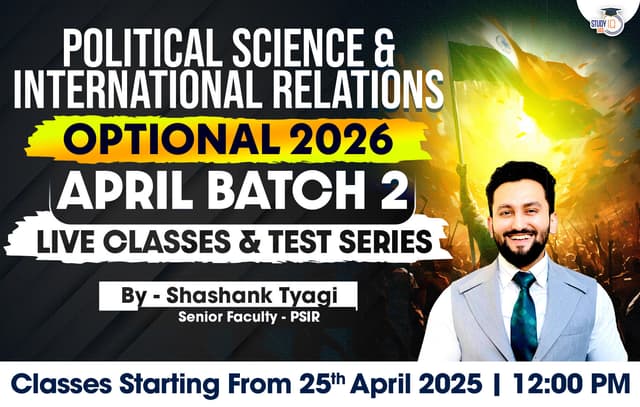Table of Contents
Spade Toothed Whale
Context: A spade-toothed whale, washed up on an Otago beach in New Zealand.
About Spade Toothed Whale
- Scientific Name: Mesoplodon traversii
- It is one of the 21 species of beaked whales, or ziphiids.
- Rarity: They’re enigmatic animals.
- The spade-toothed whale is considered the world’s rarest whale.
- There have been no live sightings recorded.
- Previously, only six other spade-toothed whales had been identified.
- Past opportunities for study were missed because these specimens were buried before DNA tests could be conducted.
|
Facts |
|
- Habitat:
- Probably inhabits the southern Pacific Ocean.
- Its exact living areas are largely unknown, attributed to the deep oceanic trenches in this region.
- Biological Mysteries: Details about its diet, population size, and specific behaviours are not well understood.
- IUCN Status: Data Deficient (DD)
|
Fact |
| New Zealand’s Indigenous people consider whales a taonga — a sacred treasure.
Related Facts about New Zealand Volcanoes:
Sacred Volcanoes:
Mountain Ranges:
Tribes of New Zealand
|
ISRO Launch Imbalance
Context: Somanath, Chairman of ISRO, highlighted that ISRO’s launch vehicle capability currently exceeds demand by three times.
Reason for Demand of Launch Vehicles
- Satellites have a defined mission life and require replacement over time, driving ongoing demand for launch vehicles.
- Advances in technology, such as reusable rocket stages, are reducing costs and enhancing the sustainability of launch operations.
Shift to Demand-Driven Model
- Previous Model: Historically, ISRO followed a supply-driven model, creating and launching satellites before securing specific demand.
- Current Model: Post-2019-2020 reforms, ISRO shifted to a demand-driven approach, where satellites are built and launched based on pre-existing demand.
Current Status Of ISRO Capability
- Launch Vehicles: India operates four primary launch vehicles:
- Small Satellite Launch Vehicle (SSLV)
- Polar Satellite Launch Vehicle (PSLV)
- Geosynchronous Satellite Launch Vehicle (GSLV)
- Launch Vehicle Mark-III (LVM-3)
- These vehicles can launch payloads up to four tonnes to geosynchronous orbit.
Satellite Operations:
- India’s satellite fleet serves various purposes including communications, remote sensing, navigation, meteorology, disaster management, and scientific missions.
- Key missions requiring launch vehicles include Chandrayaan 3 and Aditya L1.
- Upgrades and New Developments:
- LVM-3 is slated for an upgrade with a semi-cryogenic engine to increase its payload capacity to six tonnes.
- The proposed Next Generation Launch Vehicle (NGLV or Project Soorya) aims to carry 10 tonnes to geostationary transfer orbit (GTO).
Challenges in India’s Space Sector
- Awareness: There is a significant challenge in creating awareness and demand for space-based services among potential users such as businesses, government entities, and the general public.
- Technological Limitations: Current Indian launch vehicles like the LVM-3 are not capable of carrying heavy payloads compared to international counterparts such as China’s Long March 5.
- Regulatory and Policy Framework: Existing policies may not fully support the rapid growth or involvement of the private sector in the space industry.
- Dependency on Foreign Launch Services: For heavier satellites, ISRO still relies on foreign launch vehicles, which can be costly and reduce India’s autonomy in space launches.
- Example: For payloads exceeding 4 tonnes, ISRO relies on foreign launch vehicles like Europe’s Ariane V and SpaceX’s Falcon 9.
Way Forward
- Educating Customers: There’s a need to educate potential customers about the benefits of satellite services to generate demand.
- Example: The need for space-based internet services where demand must be generated before satellite constellations are launched to provide the service.
- Government Transition: The long-term strategy involves the government reducing its direct involvement in the launch business, instead supporting private companies by becoming a stable customer.
- Implement regulatory reforms to ease the participation of private entities in the space sector, including simplifying licensing procedures for satellite and launch operations.
- Technological Advancements: Accelerate the development of next-generation launch vehicles like the NGLV (Project Soorya) with enhanced payload capacities.
- Creating an Ecosystem for Space Technology: Build a supportive ecosystem that includes academia, industry, and government to foster innovation and application development.
The Toll That Extreme Heat Takes On Women
Context: Women are disproportionately harmed by extreme heat in recent periods of heatwave.
Reasons
- Living Conditions: Women in informal urban settlements, like slums, live in conditions that exacerbate heat effects. Homes made of heat-trapping materials like tin, asbestos, and plastic become extremely hot.
- Work Environment: Women often work in poorly ventilated areas, particularly in kitchens, which face intense temperatures that affect their productivity and health.
Productivity and Opportunity Costs
- Extended Work Hours: Heat stress causes women to work longer hours to complete unpaid domestic tasks.
- Productivity Loss: According to Arsht-Rock’s ‘Scorching Divide’ report, heatwaves extend care-related work by 90 minutes daily in India.
- Unpaid Labour: Women spend 2.5 times more minutes per day on unpaid labour than men, with two-thirds of their productivity loss from heat stress occurring in unpaid labour domains (National Statistical Office, 2019).
Conditions for Female Informal Labourers
- Vulnerable Work Settings: Women working as street vendors, domestic helpers, construction workers, and sanitation workers face severe weather conditions.
- Lack of Cooling Resources: Many live without adequate cooling facilities, exacerbating the heat’s impact.
- Natural Cooling Shortages: Urban areas are losing green spaces, which traditionally help mitigate heat.
Rural Challenges
- Routine Hardships: Women in rural areas start their days cooking over biomass stoves, contributing to significant health risks.
- Unsafe Working Conditions: Working inside with heat-conductive roofing or outdoors in fields places them at risk of heat-related illnesses.
- Impact on Agriculture: Heatwaves also negatively affect crop yields, influencing food security for rural families.
Health Impacts
- Heat-Related Illnesses: Women face a higher incidence of heat cramps, heat stroke, and hyperthermia due to physiological differences, such as body fat and water content.
- Reproductive Health Risks: Heat stress is linked to increased rates of preterm delivery, miscarriage, and stillbirth, which is alarming given India’s high maternal mortality rates.
Need for Resilience and Adaptation
- Policy Recommendations:
- Urban Planning: Implement climate-friendly urban designs that consider temperature reductions.
- Cooling Technologies: Develop and distribute sustainable cooling solutions.
- Care Work Division: Ensure a fairer distribution of domestic tasks.
- Essential Services: Improve public access to services that aid in heat mitigation.
Stealth Frigates
Context: Stealth frigates incorporate advanced technology to minimise radar cross-section and enhance invisibility to enemy detection systems, reducing the likelihood of detection and engagement.
Key Features
- Radar Cross-Section Reduction: The vessel’s hull and superstructure are designed to deflect and absorb radar waves, significantly lowering the ship’s visibility on enemy radar screens.
- Emission and Signature Management: Equipped with systems that control electromagnetic emissions from radar, radio, and other communications to minimise detection risks from enemy sensors.
- Infrared and Thermal Signature Minimization: Uses materials and designs that reduce infrared and thermal signatures, decreasing visibility to infrared and heat-seeking sensors.
- Acoustic Signature Reduction: Implements sound-absorbing materials and construction techniques to lower noise from machinery and propulsion, making detection by sonar more difficult.
- Operational Roles: Stealth frigates are versatile in modern naval warfare, suitable for anti-submarine warfare, anti-air warfare, maritime patrol, surveillance, and escort missions.
- Enhanced Survivability: The stealth capabilities of these frigates enhance their survivability by reducing detection and engagement ranges in naval operations.
Project 17A Frigates
- Project 17A frigates are an advanced version of the P17 (Shivalik Class) frigates, featuring enhanced stealth capabilities, modern weapons, sensors, and platform management systems.
- The Indian Navy ordered 7 stealth frigates: 4 are being built by Mazagon Dock Ltd (MDL) and 3 by Garden Reach Shipbuilders and Engineers (GRSE).
- Design and Development: The P17A ships were designed by the Navy’s Warship Design Bureau with about 75% of equipment and systems sourced from indigenous firms.
Launches and Progress:
- The first ship, ‘Nilgiri‘, constructed by MDL, launched on September 28, 2019.
- ‘Himgiri’, the first ship built at GRSE, launched on December 14, 2020.
- ‘Udaygiri’, launched on May 17, 2022, is anticipated to start sea trials in the latter half of 2024.
- ‘Dunagiri’, the fourth P17A frigate, launched in July 2022, is named after a mountain range in Uttarakhand.
- ‘Taragiri’, named after a Himalayan hill range in Garhwal, is the fifth ship in the series.
- ‘Vindhyagiri’, the last of the three ships built by GRSE, rounds out the trio constructed in Kolkata.
Kharchi Puja
- Kharchi is a major festival in Tripura, celebrated in July-August on the 8th day of the new moon.
- The term ‘Kharchi’ derives from the Tripuri words “Khar” or “Kharta” (sin) and “Chi” or “si” (cleaning), symbolising the cleansing of sins.
- The festival coincides with ‘Ashad Shukla Ashtami’.
- During the festival, fourteen deities are worshipped by the Royal priest known as ‘Chantai’.
- Kharchi Puja lasts 7 days and is held at the 14 Gods temple in old Agartala, also known as the ‘Chaturdasha Devata’ temple.
- The deities of Kharchi Puja are represented only by heads, not full bodies.
- On the day of the puja, these deities are carried by Chantai members to the river Saidra, where they are bathed with holy water and then returned to the temple.
Examples, Data and Case Studies
India-Russia Bilateral Relation (GS-2): According to Sberbank, India and Russia have doubled their payments in national currencies (rupee-rouble) since last year despite sanctions by the U.S. and European Union.


 5 Years of SVAMITVA Scheme and Its Benef...
5 Years of SVAMITVA Scheme and Its Benef...
 Places in News for UPSC 2025 for Prelims...
Places in News for UPSC 2025 for Prelims...
 Countercyclical Capital Buffer (CCyB): P...
Countercyclical Capital Buffer (CCyB): P...





















